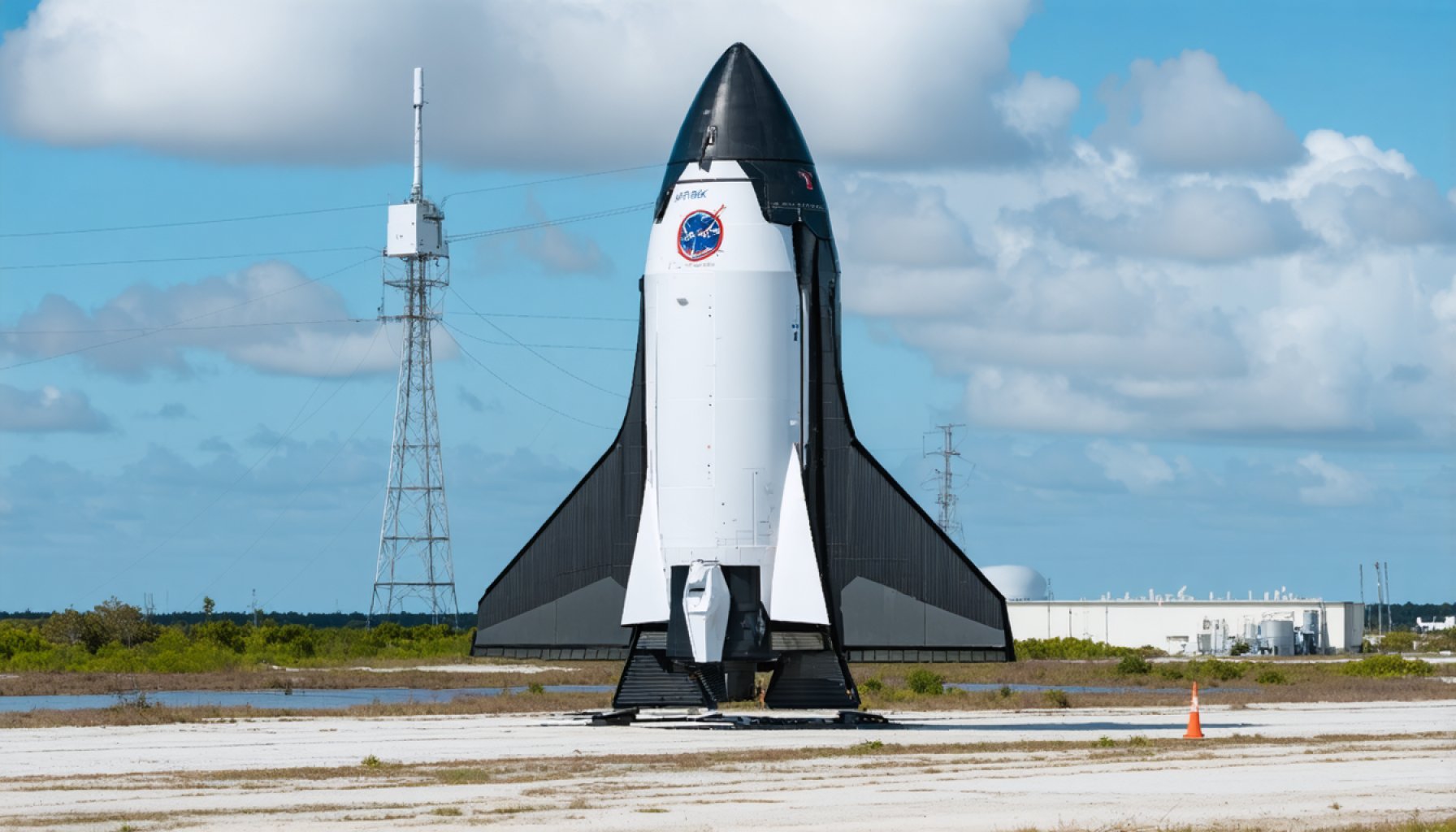- SpaceX’s Falcon 9 launched 21 Starlink satellites, enhancing global connectivity.
- 13 satellites feature Direct to Cell technology, aiming to eliminate cellular dead zones.
- Starlink’s satellite network serves over 100 nations, connecting remote and underserved areas.
- Growing satellite numbers raise concerns of space congestion and potential collision risks.
- The debate centers around balancing technological advancement with environmental stewardship.
- SpaceX faces the challenge of expanding connectivity while ensuring sustainable space practices.
Under the vast canopy of the Florida sky, SpaceX’s Falcon 9 rocket ascended with a deafening roar from the launch pad at NASA’s Kennedy Space Center. It carried a mission that aims to redefine global connectivity: 21 Starlink satellites, each poised to join an ever-expanding fleet orbiting the Earth. Among them, 13 carry the groundbreaking Direct to Cell technology, a beacon of hope for those in the deepest cellular shadows, promising a future where no place on Earth is out of reach.
As these satellites glide into their designated celestial highways, a silent revolution unfolds. They become part of SpaceX’s grand vision to abolish cellular dead zones, seamlessly weaving the farthest corners of the planet into a global web of communication. This initiative feeds into a vast lattice of already-thousands of satellites that beam internet services to over 100 nations—connecting remote islands, distant mountains, and underserved regions.
Yet, as we bask in the promise of universal connectivity, a specter lurks in the cosmos—the looming threat of space congestion. With every Falcon 9 mission that punctuates the skies with metallic stars, the conversation about the legacy of human footprints in space intensifies. Debates rage over the potential hazards; the cosmic ballet of satellites risks metamorphosing into a cluttered dance, heightened by the specter of collisions and the unsettling prospect of atmospheric pollutants.
Can the promise of unbroken communication justify this celestial traffic jam? It is a question resonating with environmentalists and industry leaders alike, urging innovators to tread softly as they place more footprints in the sky.
The narrative of SpaceX’s Starlink saga is both remarkable and reflective—a story of technological triumph intertwined with cautionary whispers about stewardship and sustainability. As the world hurtles toward a seamlessly connected future, it grapples with a critical undertaking: ensuring that this chase for connectivity remains harmonious with the rhythm of the universe.
In this delicate balance lies the true challenge for SpaceX: not just to connect the world, but to do so responsibly, paving paths of innovation while safeguarding the stars.
SpaceX’s Starlink: Crafting the Future of Global Connectivity, But At What Cost?
SpaceX’s latest launch of the Falcon 9 rocket, carrying 21 Starlink satellites, marks another stride in the ambitious goal to provide global internet connectivity. Among these satellites, 13 are equipped with the pioneering Direct to Cell technology, aimed at eliminating cellular dead zones. This technology represents a breakthrough in communication, ensuring that even the remotest parts of the world find their place in the global network.
The Transformative Potential of Starlink’s Direct to Cell Technology
1. How It Works: Direct to Cell technology allows mobile devices to connect directly with satellites, bypassing the need for traditional cell towers. This can provide coverage in sparsely populated or remote areas, where building infrastructure is not feasible.
2. Real-World Use Cases: This technology is pivotal for emergency services, disaster response, and rural communities, providing instant communication capabilities where previously there might have been none.
3. Industry Trends and Market Forecasts: The satellite internet market is projected to grow substantially, with reports forecasting a value of over $43 billion by 2025. Starlink’s advancements position it as a leader in this burgeoning market.
Addressing Space Congestion and Environmental Concerns
The rapid increase in the number of satellites orbiting Earth raises significant environmental and regulatory questions.
1. Space Debris: As more satellites are launched, the potential for collisions and space debris increases. The European Space Agency estimates that there are over 34,000 pieces of debris larger than 10 cm.
2. Sustainability Mechanisms: Companies like SpaceX need to implement sustainable practices, such as ensuring satellites burn up upon re-entry or are safely deorbited at the end of life.
3. Expert Insights: Environmentalists advocate for international agreements on space traffic management and debris mitigation to prevent orbital overcrowding.
Comparisons and Limitations
1. Compared to Other Providers: Starlink offers lower latency and higher speeds than traditional satellite providers, which can be advantageous for real-time applications like gaming or video conferencing.
2. Limitations: The primary limitation of Starlink’s service is the dependency on line-of-sight communication with satellites, which may be intermittently obstructed by geographical features or severe weather.
Pros and Cons Overview
Pros:
– Global reach with potential to bridge the digital divide.
– Instant communication for emergency and remote applications.
– Potentially fast and reliable internet service.
Cons:
– Environmental impact and space debris concerns.
– Service quality variability depending on geographic and weather conditions.
– Initial setup costs could be a barrier for some users.
Actionable Recommendations
For those considering switching to satellite internet:
– Evaluate Your Location: Assess whether your area is prone to service interruptions due to weather or natural obstacles.
– Cost Analysis: Weigh the initial investment against potential benefits, especially if other forms of broadband are unavailable.
– Stay Informed: Keep updated on SpaceX’s sustainability practices and future commitments to managing space traffic.
By embracing the potential of Starlink, stakeholders must also ensure responsible stewardship of space. Balancing connectivity advances with ecological consciousness will be vital for sustainable progress. For continuous updates on technological advancements, visit SpaceX.
